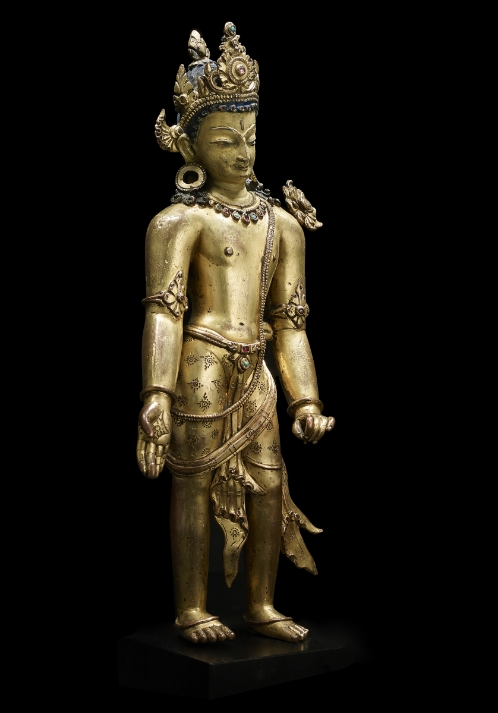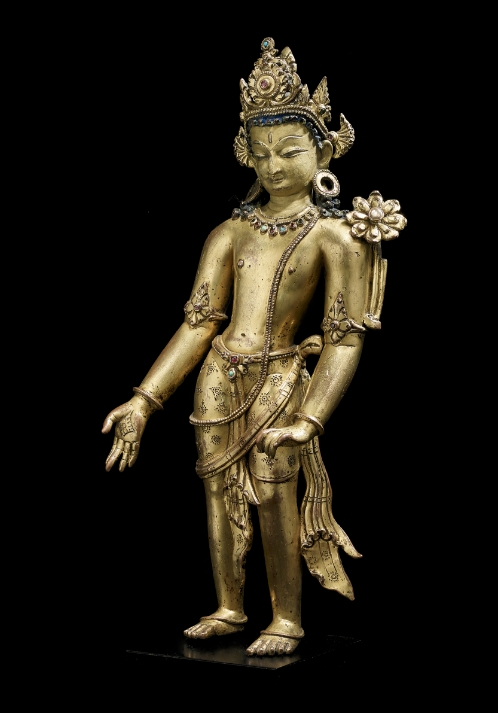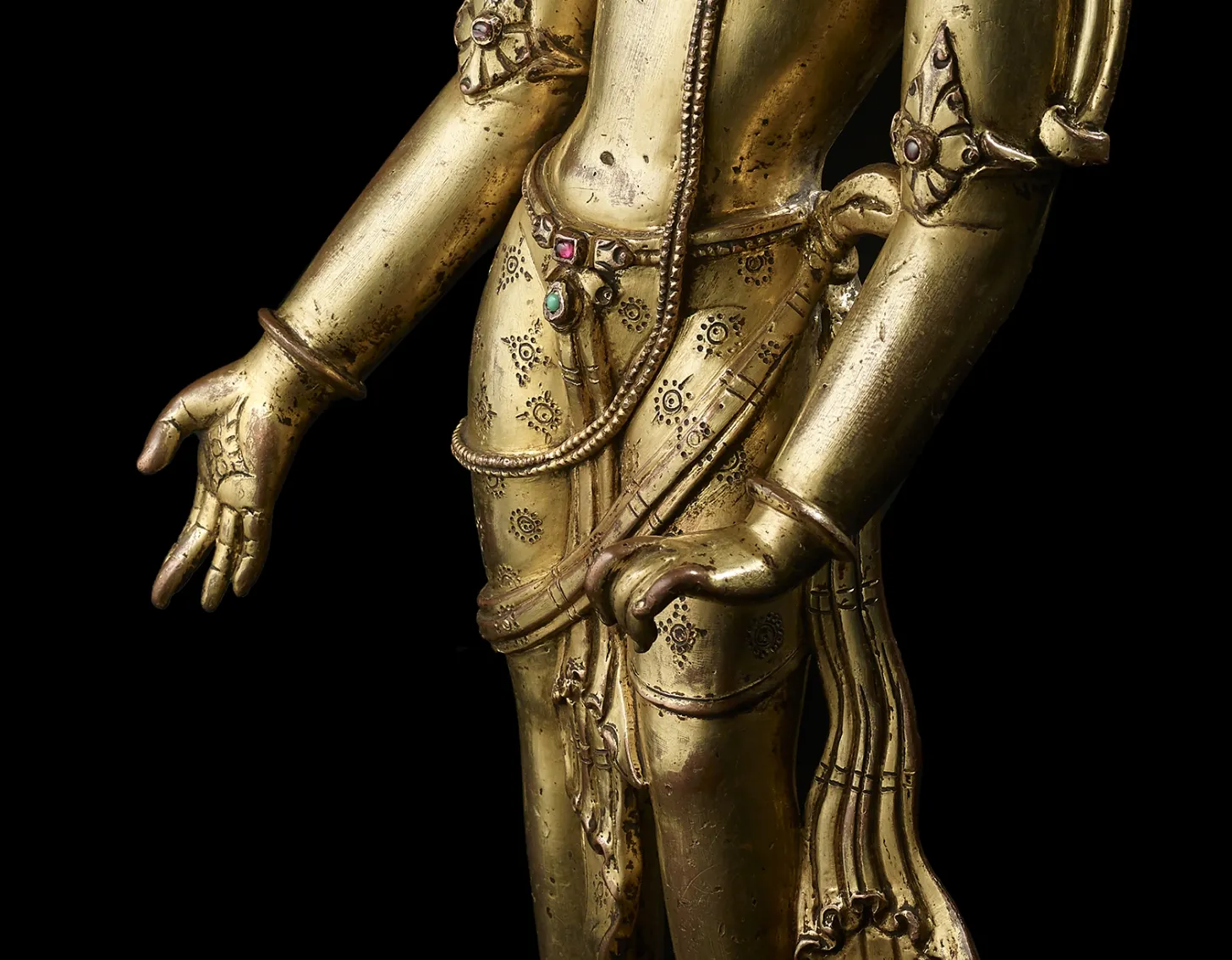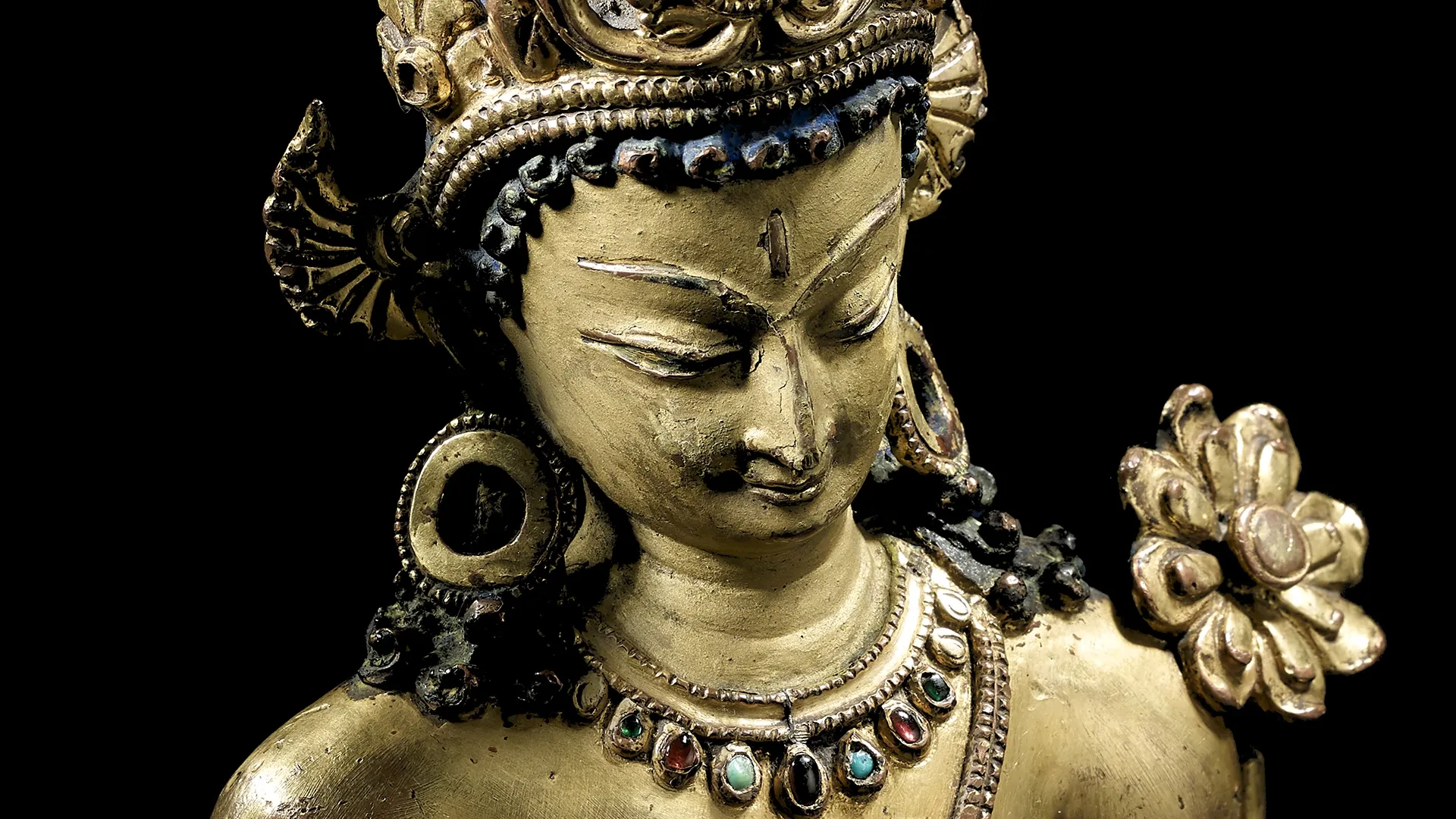The figure of Padmapani (cat. no. 11) exemplifies a form of the Bodhisattva that was popular during the early Malla period (c. 1200-1479). Approachable, regally adorned, of diminutive proportions, this is a typically Nepalese interpretation of the immensely popular Buddhist deity Avalokiteshvara, “The Lord Who Looks Down [with Compassion]”.
The right hand offers a gesture of generosity (varada mudra cat. no. 11.2), the left once held the stem of a lotus that blossoms at his shoulder.


A short skirt incised with floral designs is secured at the waist with a gem-inset belt (cat. no. 11.1). The garment covers the thighs and descends in cascading flutters at the hip and groin. Adornment includes a necklace with inset pendant gems of red, turquoise, green, and purple. An empty channel just above the pendants was once filled with seed pearls, secured in place by fine wires. One still remains (cat. no. 11.3). A slight bend in the left knee relaxes the formal pose. Slightly earlier examples are in the Cleveland Museum of Art and in the Los Angeles County Museum of Art; a much larger and somewhat later example may be seen in the Victoria & Albert Museum in London. While the richly gilded copper cast, the jewelry, and the proportions are hallmarks of Kathmandu Valley style. The gold paint on the face and blue pigment in the hair reflect Tibetan ritual practices, suggesting the work was in Tibet for some part of its history.

